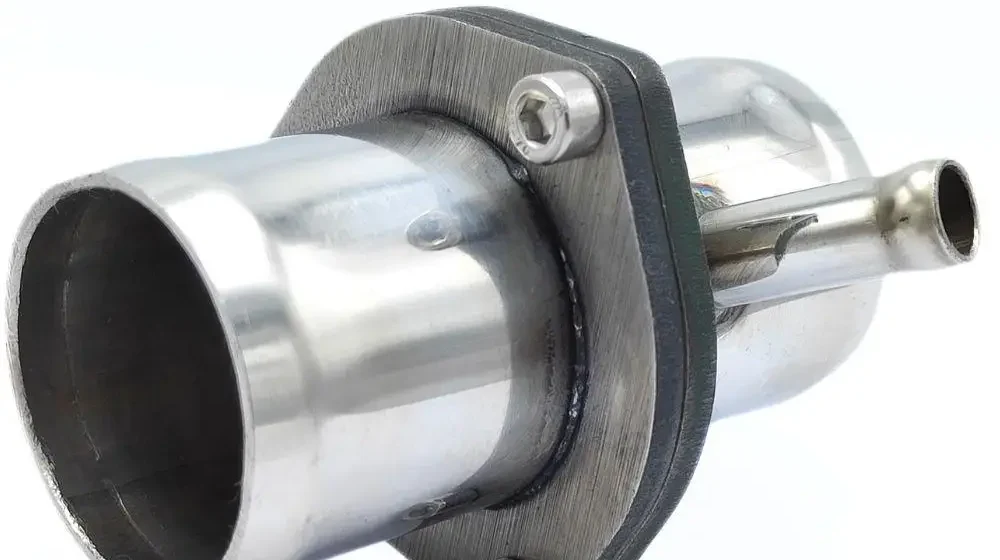What is the purpose of the device?
In short, it improves engine performance. When a thermostat is located close to the engine (e.g., on the cylinder head), it might “open” prematurely before the coolant reaches the required temperature. This can prevent the engine from warming up properly, cause poor cabin heating, fluctuating RPMs, and increased fuel consumption. A remote housing solves this issue by creating a distance between the thermostat and the engine.
What is the construction made of?
Our remote thermostat housings consist of two flanges (hence the “F” in their name) secured together with three bolts. This design is not only convenient for installation but also simplifies thermostat replacement in the future.
These housings are easy to disassemble/reassemble, requiring no special skills, lubrication, or sealing. Simply place the thermostat and sealing ring into the housing.
What materials are used to make the housing?
Like most of our products, the universal housings are made from high-quality stainless steel—a durable, aesthetic, and highly resilient material. As with other stainless steel components, thermostat housings come with a lifetime warranty.
Do I need a special thermostat for the remote housing?
No, a standard thermostat with the desired opening temperature will work. The required thermostat plate diameter is 48 millimeters.
How can I prevent air pockets in the housing?
There are two options:
- If your chosen housing doesn’t have a throttle flange (i.e., it only has inlet and outlet ports), you can install a thermostat with a bypass valve, such as those made by Wahler, available in our store. In this case, the thermostat itself will handle air removal.
- If your thermostat doesn’t have a bypass valve, opt for a housing with a throttle flange.
I don’t know which inlet diameter I need. What should I do?
Measure the inner diameter of the corresponding hose. If you can’t measure the inner diameter, measure the outer diameter and subtract 6 mm to get the correct size.
Are the thermostat housings only compatible with the specified vehicles?
No, that’s why they’re called universal housings. Compatibility depends on the car, its engine, displacement, power, and cooling system performance. If desired, our housings can be installed on anything from piston-engine airplanes to helicopters—yes, we’ve had such cases!
I have a car with air conditioning and a cramped engine bay. Any advice?
For owners of General Motors engines, we’ve developed housings with flanges angled at 45 degrees. Thanks to this design, the part is easily installed to match the radiator hose’s bend.
If you don’t find the right option for your vehicle, contact us, and we’ll find a solution.
Do you create custom remote housings?
Yes. Please check here
